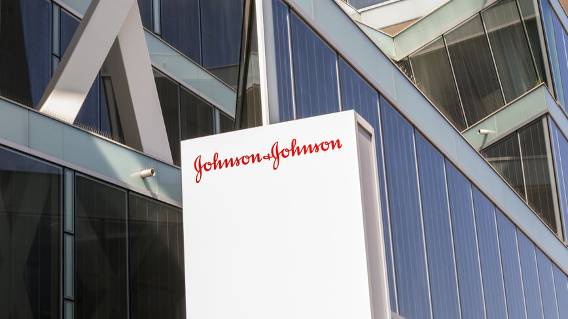Johnson & Johnson Agrees to $8.9 Billion Talc Settlement
Editors carefully fact-check all Drugwatch.com content for accuracy and quality.
Drugwatch.com has a stringent fact-checking process. It starts with our strict sourcing guidelines.
We only gather information from credible sources. This includes peer-reviewed medical journals, reputable media outlets, government reports, court records and interviews with qualified experts.

Johnson & Johnson, the world’s largest drugmaker, announced Tuesday it has agreed to settle tens of thousands of lawsuits against its asbestos-contaminated talcum powder products for $8.9 billion.
Earlier this week, J&J’s subsidiary, LTL Management, filed for bankruptcy protection. It requested a reorganization plan to resolve current and future claims against its talc products.
The newest proposal, for $8.9 billion, is nearly five times the initial $2 billion offer and bankruptcy filing, which a federal court rejected in January. The U.S. Court of Appeals for the 3rd Circuit overturned that bankruptcy proposal because the company was not in “financial distress.”
Retailers in 2019 pulled Johnson’s Baby Powder, the company’s iconic talc-based product, from shelves after the U.S. Food and Drug Administration found asbestos in a container that filled a 33,000-bottle batch.
Reports later showed people had developed mesothelioma and ovarian cancer from years of using the asbestos-contaminated powder. Court documents show Johnson & Johnson knew its talc contained asbestos as early as the 1950s.
In August 2022, Johnson & Johnson announced it would pull its talc baby powder products worldwide by this year. It reformulated the product using a cornstarch base.
Johnson & Johnson Settlement Details
Securities and Exchange Commission records show the settlement will be paid out over 25 years through LTL Management. Reuters reported that under the proposed settlement terms, plaintiffs who were diagnosed with one of the related cancers before April 1, 2023, would be paid from a bankruptcy trust within one year of approval of the Chapter 11 plan.
Attorneys who represent nearly 70,000 plaintiffs, including loved ones of those who died of mesothelioma or ovarian cancer, said the proposed settlement is a “significant victory for the tens of thousands of women suffering from gynecological cancers caused by J.&J.’s talc-based products,” according to The New York Times.
The next step is for the bankruptcy court to approve the filing and the settlement. Johnson & Johnson also must get approval from the claimants.
Despite the bankruptcy proposal and landmark settlement, Johnson & Johnson continues to deny any wrongdoing. Erik Haas, Worldwide Vice President of Litigation at Johnson & Johnson, said the company “continues to believe that these claims are specious and lack scientific merit.
“However, as the Bankruptcy Court recognized, resolving these cases in the tort system would take decades and impose significant costs on LTL and the system, with most claimants never receiving any compensation,” Hass said.
Talcum Powder & Mesothelioma
Talc is a soft mineral used in many products, including makeup, talcum powder and deodorant, among others. It is not toxic. Asbestos, a carcinogen linked to mesothelioma and other cancers, often forms near talc deposits. Both substances are similar in composition, and talc can easily become contaminated with asbestos.
When talc products such as Johnson’s Baby Powder are contaminated with asbestos, people using those products can accidentally inhale or ingest asbestos fibers. After many years of exposure, those who use contaminated talc products are at high risk of developing ovarian cancer or mesothelioma from the talcum powder.


